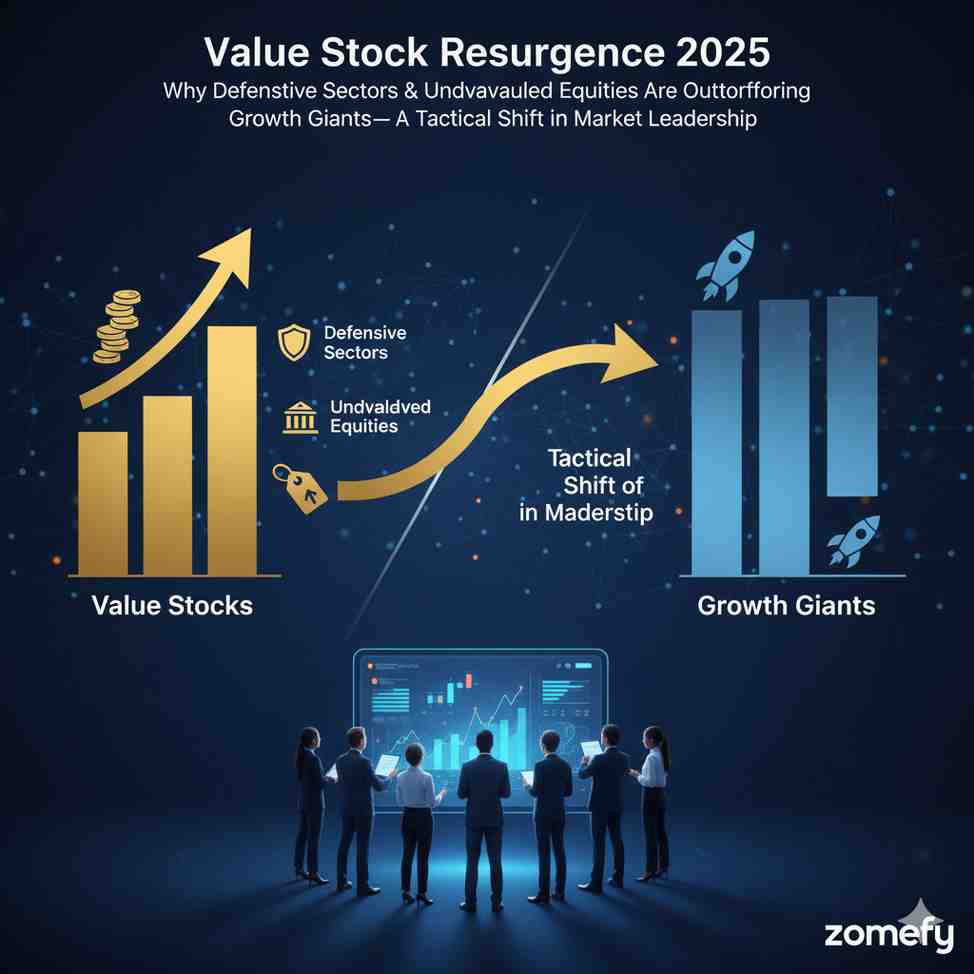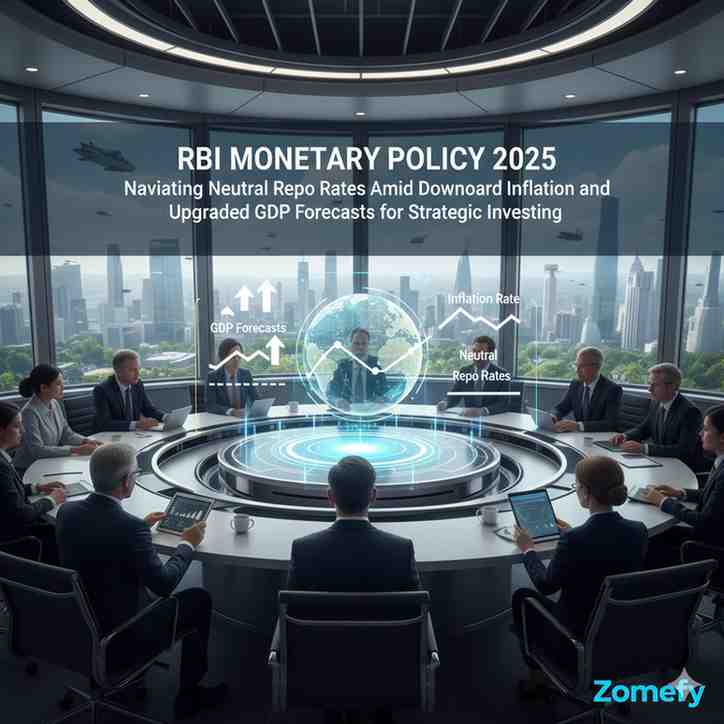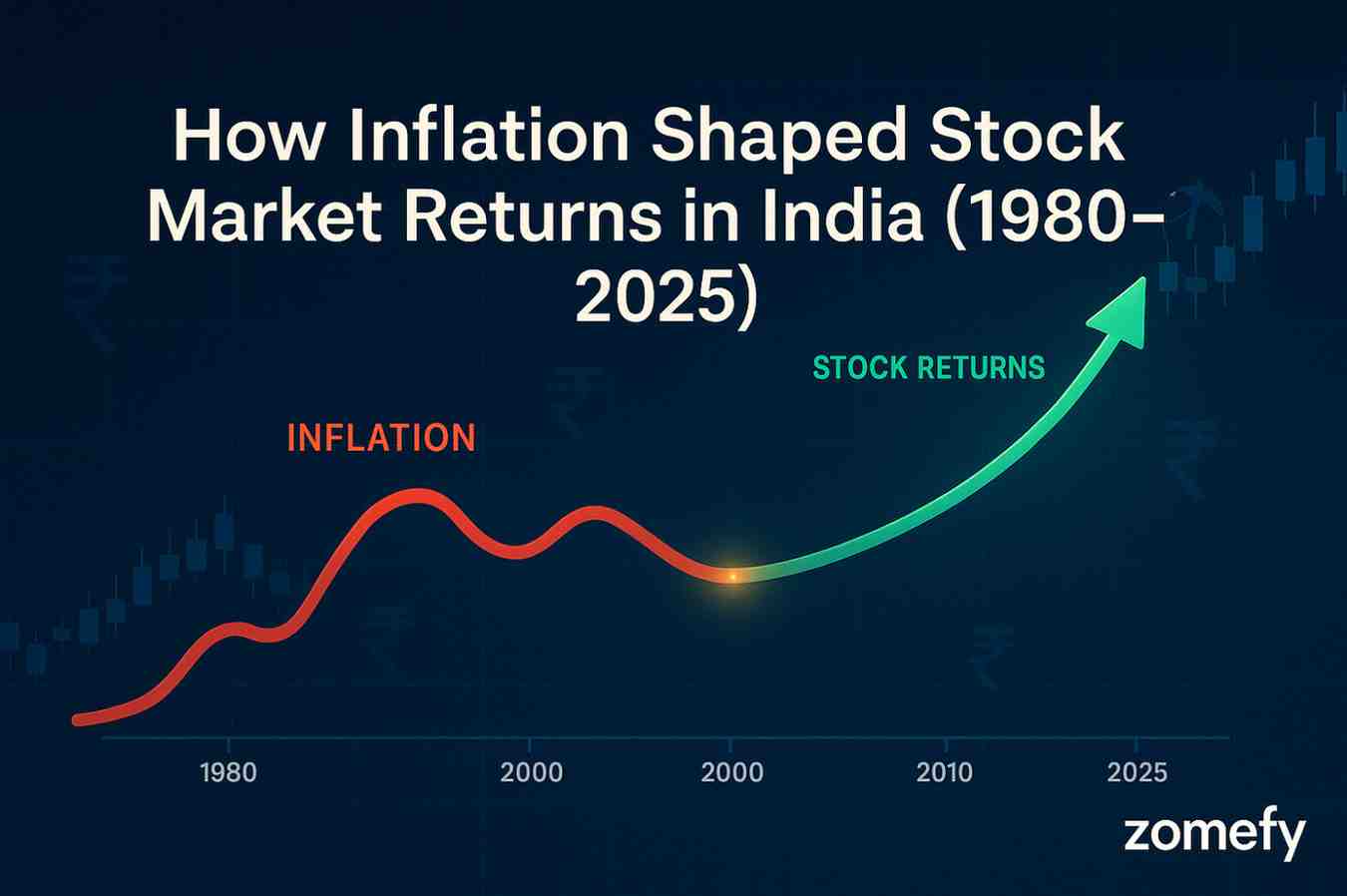Nifty and Sensex Outlook 2025: Navigating Sectoral Rotation Strategies Amidst Market Volatility
The Indian equity markets, represented by the Nifty 50 and the BSE Sensex, have demonstrated remarkable resilience and dynamism amidst a backdrop of global uncertainties and domestic economic reforms.
Nifty and Sensex Outlook 2025: Navigating Sectoral Rotation Strategies Amidst Market Volatility
What You Can Do Next
- Read the full article for complete insights
- Save for later reference
- Share with others learning about this topic
Image not available
The Indian equity markets, represented by the Nifty 50 and the BSE Sensex, have demonstrated remarkable resilience and dynamism amidst a backdrop of global uncertainties and domestic economic reforms. As we approach 2025, retail investors and financial professionals alike face the challenge of navigating market volatility while capitalizing on emerging sectoral trends. The evolving macroeconomic landscape, including regulatory shifts, geopolitical developments, and technological advancements, demands a nuanced approach to portfolio construction. This article provides a comprehensive outlook on the Nifty and Sensex for 2025, focusing on sectoral rotation strategies that can help investors optimize returns and manage risks effectively. By analyzing current valuations, sectoral performance, and policy influences, we aim to equip investors with actionable insights tailored to the Indian market context.
Market Overview and Valuation Context for 2025
As of late 2025, the Sensex is trading around 84,600 points, while the Nifty 50 hovers near 25,900, reflecting a positive shift from the subdued sentiment experienced in 2024[1][2]. The Nifty 50 carries a calendar year 2026 forward price-to-earnings (P/E) ratio of approximately 18x, slightly above its historical long-term average of 17x, suggesting limited downside but room for selective upside in quality sectors[1]. Market breadth has been moderate, with 28 stocks advancing versus 22 declining, indicating cautious optimism among investors[2]. Key sectors such as Information Technology (IT), Banking, Automobile, and Pharmaceuticals have led gains, supported by strong corporate earnings and favorable policy tailwinds. For instance, IT heavyweights like Infosys (+3.81%), HCL Technologies (+2.55%), and TCS (+2.21%) have contributed significantly to market performance[2]. However, volatility persists due to global macroeconomic factors like oil price fluctuations and US sanctions affecting energy markets, which indirectly impact Indian equities[1]. Understanding this valuation and market environment is critical for constructing sector rotation strategies that align with expected growth trajectories and risk profiles.
Key Drivers Influencing Market Valuations
Several factors underpin the current valuation levels of the Nifty and Sensex. Firstly, India's robust economic growth outlook, projected at around 6-7% GDP growth in 2025, continues to attract both domestic and foreign institutional investors. The government's focus on infrastructure development, digitalization, and financial inclusion supports sectors like banking and IT. Secondly, corporate earnings growth is expected to accelerate, with consensus estimates indicating 13-16% earnings growth for the 2025/26 fiscal year, bolstering investor confidence[4]. Thirdly, regulatory reforms such as streamlined tax policies and enhanced ease of doing business have improved the investment climate. However, inflationary pressures and global geopolitical tensions inject caution, leading to bouts of volatility. For example, oil price hikes due to US sanctions on Russian energy firms have raised input costs for Indian industries, affecting profit margins[1]. These dynamics collectively influence sectoral performance and necessitate a tactical allocation approach to navigate the market landscape effectively.
Sectoral Rotation Strategies: Identifying Opportunities in 2025
Sectoral rotation involves shifting investments between different sectors to capitalize on changing economic cycles, valuations, and policy environments. In 2025, Indian markets present distinct opportunities and risks across sectors, making rotation strategies particularly relevant. Investors should consider the following sectors based on current and anticipated trends:
Information Technology and Digital Transformation
The IT sector remains a cornerstone of the Nifty 50, accounting for over 9% of the index weight through companies like Infosys, TCS, and HCL Technologies[2]. Despite global economic uncertainties, Indian IT firms benefit from sustained demand for digital transformation, cloud computing, and artificial intelligence services. The sector is expected to deliver double-digit revenue growth in 2025, driven by client diversification and increased outsourcing from developed markets. Additionally, strategic investments in emerging technologies position IT companies for long-term growth. Retail investors can consider phased accumulation of quality IT stocks during short-term corrections to benefit from secular trends. Risk considerations include currency fluctuations and geopolitical tensions affecting global clients.
Banking and Financial Services
The banking sector, led by private players like HDFC Bank and ICICI Bank, has shown resilience with improving asset quality and credit growth. Despite recent minor setbacks in share prices (-1.32% for ICICI Bank and -0.11% for HDFC Bank on a recent trading day)[2], the sector benefits from India's expanding credit penetration, digital payment adoption, and regulatory support such as the Reserve Bank of India's (RBI) accommodative monetary stance. Financial inclusion initiatives and rising disposable incomes further underpin loan demand. Investors should focus on banks with strong balance sheets and robust risk management frameworks. Diversification into non-banking financial companies (NBFCs) with niche market focus could also enhance portfolio returns. Key risks include rising interest rates and potential asset quality deterioration in stressed sectors.
Automobile and Electric Vehicles (EVs)
The automobile sector is undergoing a significant transformation with the accelerated adoption of electric vehicles, supported by government incentives such as the Faster Adoption and Manufacturing of Hybrid and Electric Vehicles (FAME) scheme. Leading auto manufacturers like Maruti Suzuki and Tata Motors are expanding their EV portfolios, aligning with India's commitment to reduce carbon emissions. Additionally, robust demand for passenger vehicles and two-wheelers amid improving rural incomes supports traditional auto sales. Sector rotation into auto stocks can be timed to benefit from policy-driven growth and cyclical recovery. Investors should monitor raw material price volatility, supply chain disruptions, and regulatory changes impacting emission norms.
Pharmaceuticals and Healthcare
Pharmaceuticals and healthcare sectors have gained prominence post-pandemic, with increased government spending on health infrastructure and rising domestic demand. Indian pharma companies like Sun Pharma and Dr. Reddy’s Laboratories are expanding global footprints through generics and biosimilars. The sector's defensive qualities make it attractive during periods of volatility. However, regulatory scrutiny in international markets and pricing pressures remain challenges. Investors seeking stable returns can allocate selectively to pharma stocks with strong R&D pipelines and diversified product portfolios.
Implementing Practical Sector Rotation Strategies
To effectively implement sector rotation strategies in the Indian market context, investors should adopt a disciplined approach combining fundamental analysis, market timing, and risk management. Key actionable steps include:
Portfolio Diversification and Tactical Allocation
Maintain a diversified portfolio across sectors with varying economic sensitivities to mitigate risk. Allocate higher weights to sectors exhibiting strong earnings momentum and favorable macroeconomic support, such as IT and banking, while trimming exposure to overvalued or cyclical sectors during downturns. Use exchange-traded funds (ETFs) and sectoral mutual funds for cost-effective exposure and liquidity.
Monitoring Economic Indicators and Regulatory Changes
Stay updated on key economic indicators such as GDP growth, inflation, interest rates, and credit growth, which influence sectoral performance. For example, rising interest rates may dampen banking sector profitability but could benefit financial services focused on asset management. Keep abreast of regulatory developments like tax reforms, FDI policies, and environmental regulations that can materially impact sectors like automobile and pharmaceuticals.
Using Technical and Sentiment Analysis
Incorporate technical indicators such as Relative Strength Index (RSI), moving averages, and volume trends to identify entry and exit points for sectoral shifts. For instance, the Nifty's RSI holding above 70 signals strong upward momentum, suggesting potential continuation but also caution for overbought conditions[2]. Sentiment analysis through market breadth and institutional activity can provide early signals for rotation.
Risk Management and Exit Strategies
Define clear stop-loss levels and profit targets for sectoral positions to protect capital during volatility. Regularly review portfolio performance and rebalance based on changing fundamentals and market conditions. Consider hedging strategies using index futures or options to mitigate downside risks during uncertain periods.
Risk Considerations and Market Volatility
While sectoral rotation offers opportunities, investors must remain vigilant about inherent risks. Market volatility in 2025 is influenced by factors such as global economic uncertainties, geopolitical tensions, and commodity price fluctuations. For example, sanctions on Russian energy firms have contributed to rising oil prices, increasing input costs for Indian industries and affecting corporate margins[1]. Additionally, inflationary pressures and potential monetary policy tightening by the RBI could impact sectors differently. Retail investors should be cautious of overconcentration in high-beta sectors and avoid chasing short-term rallies. Maintaining a long-term perspective with a focus on quality companies can help weather volatility. Stress testing portfolios against adverse scenarios and maintaining adequate liquidity are prudent practices.
Continue Your Investment Journey
Discover more insights that match your interests

Value Stock Resurgence 2025: Why Defensive Sectors & Undervalued Equities Are Outperforming Growth Giants—A Tactical Shift in Market Leadership
India's stock market in 2025 presents a compelling paradox that has caught seasoned investors off guard.

The Rise of Digital-Only Banking: How Fintechs are Changing Consumer Finance
Detail the rapid shift toward branchless, digital banking institutions, focusing on benefits, security innovations, and the future of retail banking.

RBI Monetary Policy 2025: Navigating Neutral Repo Rates Amid Downward Inflation and Upgraded GDP Forecasts for Strategic Investing
The Reserve Bank of India (RBI) has maintained a neutral stance on monetary policy in 2025, holding the repo rate steady at 5.

How Inflation Shaped Stock Market Returns in India (1980-2025) - Complete Analysis
Discover how inflation has impacted Indian stock market returns over 45 years. Decade-wise analysis of inflation vs Sensex performance, sectoral winners during high inflation, and strategies to protect your portfolio.
Explore More Insights
Continue your financial education journey
